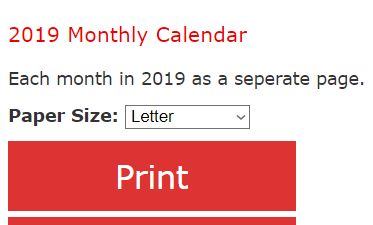“Investable” or “investible”–which spelling is correct?
How should you spell the word that may appear in descriptions of an asset management firm’s minimum requirements for clients—“investable” or “investible”?
My gut tells me “investable” with “a” because the definition depends on how much you are able to invest.

The case for “investable” over “investible”
-
- Merriam Webster’s Collegiate Dictionary includes “investable,” but not the alternative spelling. The same is true on Merriam-Webster.com, which AP style uses along with Garner’s (see #2 below) to justify its preference for “investable,” according to its “Ask the Editor” column. CollinsDictionary.com lists “investable” first, with “investible” as an alternative. Words into Type, an older reference book, says, “The correct spelling of words with the terminations -able or -ible is often puzzling. The student of orthography can find rules for the use of these endings, but it is more practical to learn the spelling of each word and refer to the dictionary if memory fails for the moment.”

- Garner’s Modern American Usage calls “-ible” “dead as a combining form in English,” while “-able” is a living suffix that may be added to virtually any verb without an established suffix.” It includes “investable” among “some of the hundreds of adjectives preferably spelled -able.” Grammarist.com explains: “Unlike –able, -ible isn’t used to make new words. It exists only in words retained from earlier stages of English.”
- The world is moving away from “investible” toward “investable,” at least as shown by Google Books Ngram data for the U.S. and the U.K. GrammarHow.com’s “Investible or Investable – Which Is Correct? (UK vs. US)” (unfortunately, the post is no longer online) looks at the Google Books Ngram for the two terms. It shows that the use of “investable” has grown steadily in U.S. books, while the use of “investible” has declined since 1950. In the U.K., “investible” initially dominated, but it has fallen below “investable” in the twenty-first century.
- Merriam Webster’s Collegiate Dictionary includes “investable,” but not the alternative spelling. The same is true on Merriam-Webster.com, which AP style uses along with Garner’s (see #2 below) to justify its preference for “investable,” according to its “Ask the Editor” column. CollinsDictionary.com lists “investable” first, with “investible” as an alternative. Words into Type, an older reference book, says, “The correct spelling of words with the terminations -able or -ible is often puzzling. The student of orthography can find rules for the use of these endings, but it is more practical to learn the spelling of each word and refer to the dictionary if memory fails for the moment.”
The case for “investible” over “investable”
- A Google search turns up more references to “investible” than to “investable,” and the imbalance has only gotten worse since I originally researched this back in 2010. Back then, I found about 393,000 references to “investible” vs. only 320,000 to “investable.” By 2020, the disparity was 2.79 million to 29.6 million. I don’t know how to explain these results, which contrast with the Google Books Ngram results discussed above.
- Fowler’s Modern English Usage says “The –ible form is the natural one for words derived from Latin verbs ending –ere or –ire, making adjectives in –ibilis.” I don’t know about “making adjectives in –ibilis,” but lo and behold, my dictionary says the word “invest” comes from the Latin investire. However, my copy of Fowler’s dates back to the 1960s.
- The Financial Times Lexicon went with “investible” when I originally researched this question in 2010 (sorry, the Lexicon link no longer works). I wondered if this could be a British thing, as Fowler’s is also British. However, when I searched the Financial Times website in 2022, instances of “investable” outnumbered “investible,” 965 to 193. This is consistent with the Google Books Ngram trend discussed above.
The SEC is a draw
A search of the SEC website yielded an equal number of results for both spellings. I wonder if it uses both as key words for search purposes.
The FINRA website gives “investable” a slight edge over “investible,” 108 to 98.
Do the two words have different meanings?
A reader suggested to me that the two words have different meanings:
Investible refers to an asset in which an investment can be made.
Investable refers to an asset that can be used to make an investment.
In ordinary usage, cash is investable but not investible, while shares are investible but not investable.
That’s an interesting theory. I haven’t found evidence in dictionaries to support it.
Still, the Nasdaq.com glossary shows only “investible” and defines it in the first sense listed above. However, a Nasdaq website search shows only four results using “investible” versus 24 for “investable.”
The bottom line: You should define your terms for your readers whether you use “investable” or “investible,” especially when the meaning isn’t clear from the context.
Note: I updated this blog post in 2015 to delete an outdated reference to an inactive poll. I expanded the post in October 2022 and updated it again in March 2023.


 I post these challenges to raise awareness of the importance of proofreading.
I post these challenges to raise awareness of the importance of proofreading.
 I post these challenges to raise awareness of the importance of proofreading.
I post these challenges to raise awareness of the importance of proofreading. I post these challenges to raise awareness of the importance of proofreading.
I post these challenges to raise awareness of the importance of proofreading.

